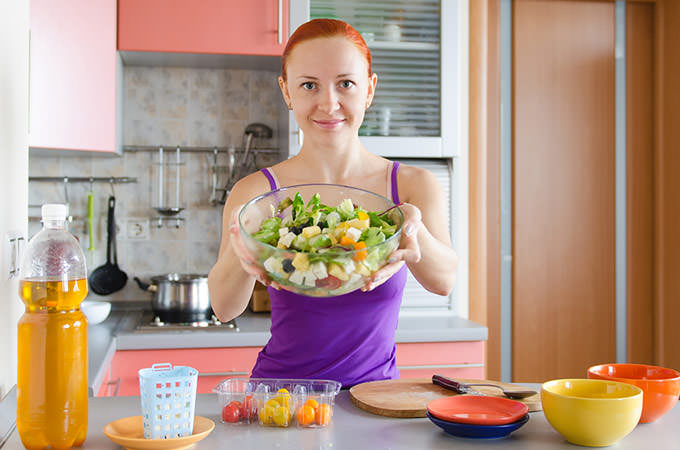
If dieting is the “way you roll,” you’re probably besties with every type of salad imaginable, or least a variation of every one of them.
Although salads are a great dieting option due to their nutritional values and low-calorie score, it can get a bit dull eating them constantly, especially when you’ve been on the diet oath for some time. Alas, it doesn’t have to be that way.
When you’re ready to up the ante on your salad game and make them even healthier and more delicious, use some of these tips to get the job done right.
Dark Leafy Bed
When you start preparing your salad, make the base from dark, leafy greens which will grant you minerals, vitamins, and fiber. Mix all types of different dark greens like kale, spinach, romaine, etc. to get your daily requirement of vitamins C, A, and K, and phytonutrients that will help reduce cancer risk.
Colorful And Non-Starchy
When you’ve made your dark bed, it’s time to bring some color to the table, and there’s no better way for doing this than with veggies. Use non-starchy vegetables like tomatoes, carrots, beets, Brussels sprouts, asparagus, red cabbage, radishes, and cauliflower to get that perfect mix of texture and color. It will make you salad pop, and it will also bring a bunch of nutrients into your system.
Top It Off With Protein
Although these veggies and greens cover fiber, vitamins, and minerals, they don’t offer protein which is essential for a healthy, well-balanced diet. Aim to use foods packed with proteins like shrimp, tuna, low-fat cottage cheese, grilled chicken breasts, and steak trimmed of fat.
When combined with the nutrients coming from the veggies and greens, protein will give you a powerful boost of sustained energy for the whole day, while making you feel full. However, not all protein will do this, so avoid full-fat cheeses and bacon, which are calorie dense.

